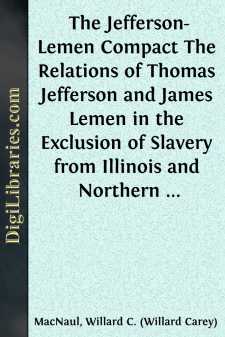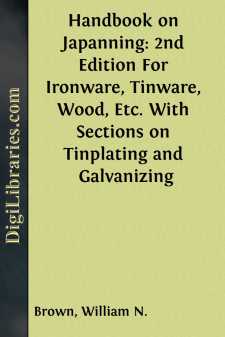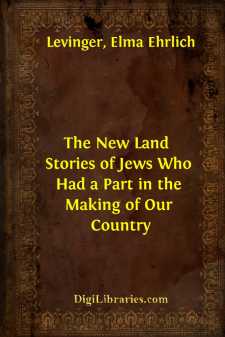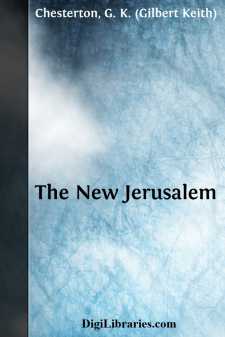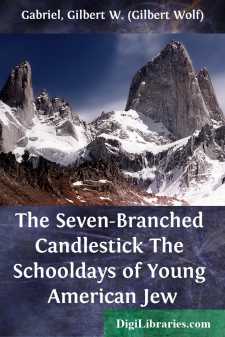Non-Classifiable
- Non-Classifiable 1768
Non-Classifiable Books
Sort by:
THE INDIAN SECT OF THE JAINAS. The Jaina sect is a religious society of modern India, at variance to Brahmanism, and possesses undoubted claims on the interest of all friends of Indian history. This claim is based partly on the peculiarities of their doctrines and customs, which present several resemblances to those of Buddhism, but, above all, on the fact that it was founded in the same period as the...
more...
by:
Henry James
A SMALL BOY AND OTHERS I In the attempt to place together some particulars of the early life of William James and present him in his setting, his immediate native and domestic air, so that any future gathered memorials of him might become the more intelligible and interesting, I found one of the consequences of my interrogation of the past assert itself a good deal at the expense of some of the...
more...
In view of the approaching centennary of statehood in Illinois, the name of James Lemen takes on a timely interest because of his services—social, religious, and political—in the making of the Commonwealth. He was a native of Virginia, born and reared in the vicinity of Harper's Ferry. He served a two-years' enlistment in the Revolutionary War under Washington, and afterwards returned to...
more...
by:
William N. Brown
INTRODUCTION. Japanning, as it is generally understood in Great Britain, is the art of covering paper, wood, or metal with a more or less thick coating of brilliant varnish, and hardening the same by baking it in an oven at a suitable heat. It originated in Japan—hence its name—where the natives use a natural varnish or lacquer which flows from a certain kind of tree, and which on its issuing from...
more...
The Three Who Came With Columbus. For a while there was no sound save the soft swish-swish of the waves as the "Santa Maria," the flagship of Columbus, ploughed its way through the darkness. The moon had long since disappeared and one by one the stars had left the sky until only the morning star remained to guide Alonzo de la Calle, crouching above his pilot wheel. The man's eyes ached for...
more...
CHAPTER I THE WAY OF THE CITIES It was in the season of Christmas that I came out of my little garden in that "field of the beeches" between the Chilterns and the Thames, and began to walk backwards through history to the place from which Christmas came. For it is often necessary to walk backwards, as a man on the wrong road goes back to a sign-post to find the right road. The modern man is...
more...
by:
Gustav Gottheil
ZIONISM Among the persons of the educated classes who follow with any attention all the more important movements of the times, it would now be difficult to find one to whom the word "Zionism" is quite unknown. People are generally aware that it describes an idea and a movement that in the last years has found numerous adherents among the Jews of all countries, but especially among those of the...
more...
INTRODUCTION I. LIFE Thomas de Quincey was born in Manchester on the 15th of August, 1785. His father was a man of high character and great taste for literature as well as a successful man of business; he died, most unfortunately, when Thomas was quite young. Very soon after our author's birth the family removed to The Farm, and later to Greenhay, a larger country place near Manchester. In 1796 De...
more...
by:
Jonathan Swift
PREFACE The history of the publication of the Journal to Stella is somewhat curious. On Swift's death twenty-five of the letters, forming the closing portion of the series, fell into the hands of Dr. Lyon, a clergyman who had been in charge of Swift for some years. The letters passed to a man named Wilkes, who sold them for publication. They accordingly appeared in 1766 in the tenth volume of Dr....
more...
BY WAY OF PROLOGUE "Years of Plenty" was the name an Englishman recently gave to a book of his school days. My own years of secondary school and college were different from his, by far, but no less full. I shall only say by way of preface that they numbered seven. There were two of them at high school, one at a military school on the Hudson, and four at our city's university. Seven in all....
more...




